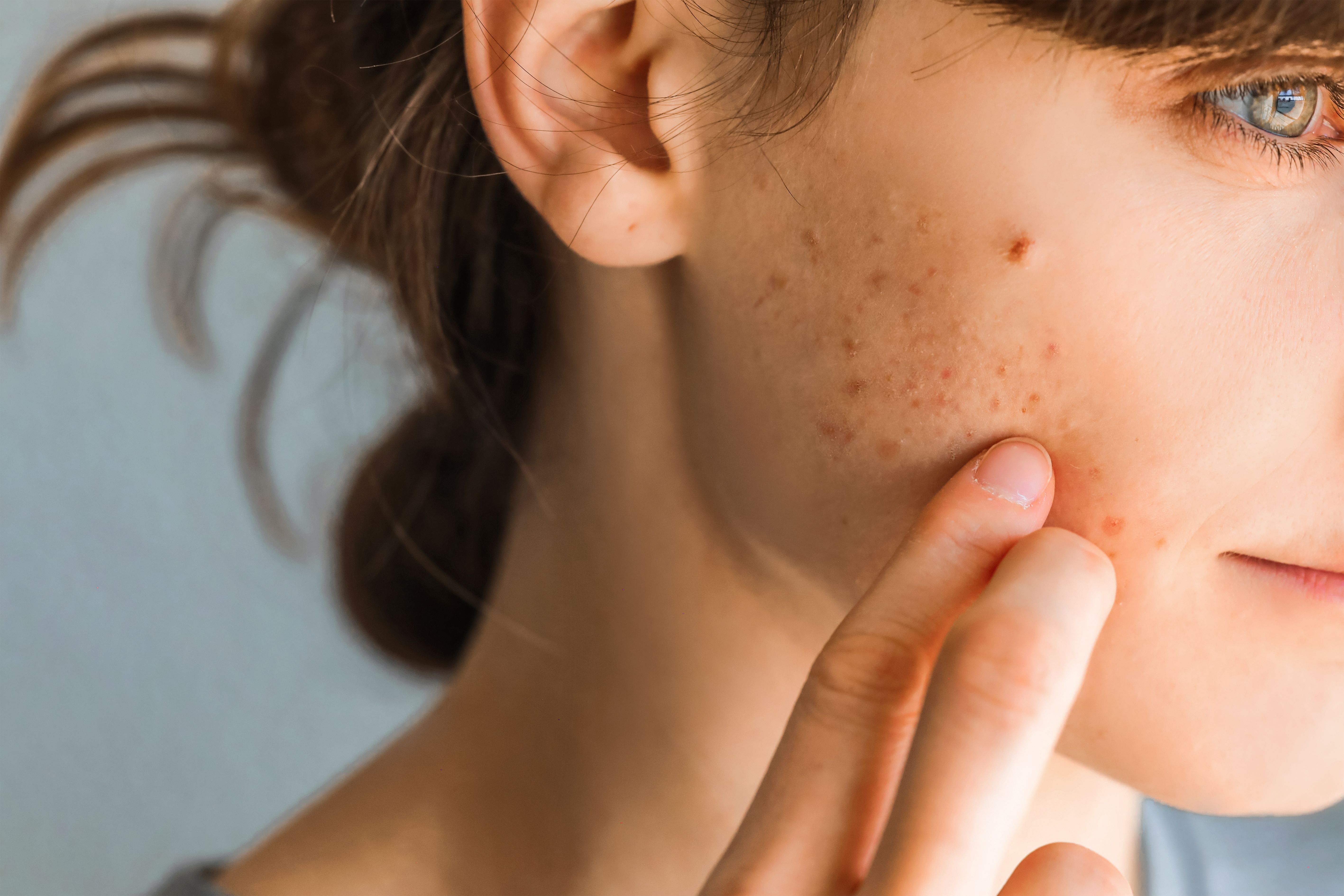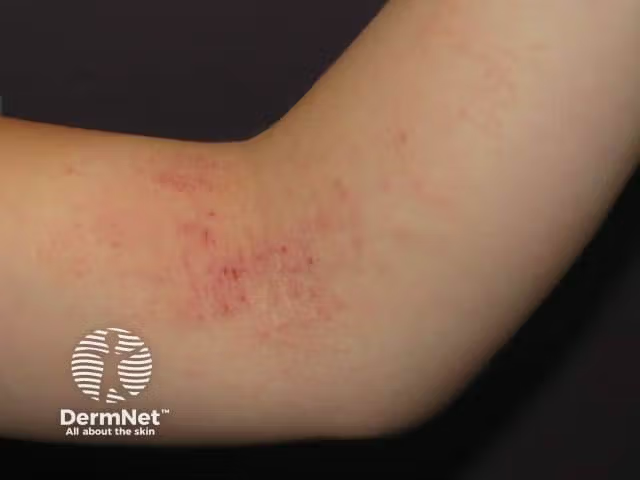- Case-Based Roundtable
- General Dermatology
- Eczema
- Chronic Hand Eczema
- Alopecia
- Aesthetics
- Vitiligo
- COVID-19
- Actinic Keratosis
- Precision Medicine and Biologics
- Rare Disease
- Wound Care
- Rosacea
- Psoriasis
- Psoriatic Arthritis
- Atopic Dermatitis
- Melasma
- NP and PA
- Skin Cancer
- Hidradenitis Suppurativa
- Drug Watch
- Pigmentary Disorders
- Acne
- Pediatric Dermatology
- Practice Management
- Prurigo Nodularis
- Buy-and-Bill
Publication
Article
Dermatology Times
The Complex World of Urticaria: Insights from Jason Hawkes, MD, MS
Author(s):
Key Takeaways
- Urticaria is divided into chronic inducible and chronic spontaneous forms, each with distinct triggers and treatment responses.
- Antihistamines are first-line therapy, with systemic options like omalizumab for non-responders.
Hawkes discusses urticaria subtypes, treatments, and emerging therapies like dupilumab and remibrutinib.
“We’re just beginning to scratch the surface, particularly in dermatology,” said Jason Hawkes, MD, MS, in an interview with Dermatology Times. “As we start to embrace this back into our specialty, we’re going to start to look at some of these subtypes in hopes of maybe offering better therapies or more consistent therapies that work for more patients.” The subject of this conversation, urticaria, remains a multifaceted dermatological condition, affecting patients in both acute and chronic forms. Hawkes, a dermatologist and principal investigator at the Oregon Medical Research Center, shared his personal and professional experiences with this condition, shedding light on its complexities and the advancements in its treatment.
Jason Hawkes, MD, MS

Hawkes’ journey with urticaria began during his second year of medical school. “I started getting hives and wheals and itching following cold exposures,” he recalled. “Particularly when I would go through the cold and come back into the warm environment, such as the hospital or the clinic, I started breaking out in red splotches.” This was the beginning of his battle with chronic cold urticaria, a condition he would eventually treat in his patients.
Personal and Clinical Understanding
Chronic urticaria can be classified into 2 main categories: chronic inducible urticaria (CIU) and chronic spontaneous urticaria (CSU). CIU, as in Hawkes’ case, is triggered by specific stimuli such as cold, heat, or pressure, whereas CSU occurs without a discernible cause. According to Hawkes, approximately 20% of chronic urticaria cases fall under the inducible category. “Not surprisingly, the etiology of these can be quite different, which means their response to therapies can also be different,” he explained.
A unique feature of CIU is the potential for provocation testing. “For example, with cold urticaria, we can put an ice cube on the inner forearm, let it sit for about 5 minutes, and then wait 10 or 15 minutes to see if a wheal forms on those sites,” said Hawkes. However, he notes that these tests are not always definitive. “In my case, I failed the ice cube test, but I had a very consistent exposure and symptom correlation with cold.”
Treatment Approaches
The management of chronic urticaria involves following a structured treatment algorithm, often guided by established guidelines such as those from the American Academy of Allergy, Asthma and Immunology, and international guidelines. Both sets of guidelines emphasize the elimination of triggers and the initiation of second-generation antihistamines as first-line therapy.1,2
Hawkes highlighted the practical application of these guidelines: “I typically have a patient add 1 antihistamine pill every 2 to 3 days. If they’re still having symptoms, [the antihistamine pills] typically will work pretty quickly. So really, within about 1½ to 2 weeks, we can usually get up to that 4-fold dosing. In my experience, they’re either going to respond to that 4-fold dosing of antihistamines or they’re not.”
For patients unresponsive to antihistamines, systemic therapies such as omalizumab are introduced. “My threshold for moving to a systemic therapy is actually very low,” he stated. Omalizumab, a monoclonal antibody targeting immunoglobulin E, has shown significant efficacy in urticaria management.3 “Most patients have a very good response to omalizumab,” Hawkes added, though he acknowledged the need to discuss potential concerns such as injection-related risks with patients.

Emerging Therapies
The landscape of urticaria treatment is rapidly evolving with new therapies on the horizon. Hawkes noted 2 promising options: dupilumab and remibrutinib.
“Dupilumab is very well known to dermatologists and is commonly used for other inflammatory conditions such as atopic dermatitis or prurigo nodularis,” he explained. Late-stage clinical trials have shown that approximately one-third of patients achieve complete resolution of itching and hives with this therapy. Its potential for treating comorbid conditions such as asthma and atopic dermatitis makes it a versatile option for many patients.4 Dupilumab has a Prescription Drug User Fee Act goal date of April 18, 2025. If approved, this would be the first targeted therapy for CSU in more than 10 years.5
Remibrutinib, on the other hand, represents a novel approach as a Bruton tyrosine kinase inhibitor. “What we found in the phase 3 trials is this is a therapy that works very, very quickly. In many patients, in a matter of days to a week, we’re seeing pretty dramatic clinical responses,” Hawkes noted. This oral medication targets the intracellular signaling pathway in mast cells, addressing both wheals and the angioedema components of urticaria.6
Unmet Needs and Future Directions
Despite these advancements, Hawkes said there are significant unmet needs in urticaria management. He emphasized the necessity for biomarkers to predict therapy responses. “What we really want to try to tease out is: Can these biomarkers, for example, predict their response to treatment A vs B vs C? That’s really what we don’t have available for these patients,” he said.
Additionally, understanding the diverse presentations of urticaria remains a challenge. “Why do patients with CIU not always respond to therapies for CSU and vice versa?” Hawkes questioned. Differentiating subtypes, such as those with predominant angioedema vs wheal formation, could pave the way for more tailored treatments.
Future Directions
Hawkes’ dual perspective as a clinician and patient provides a comprehensive view of urticaria’s complexities. His personal journey underscores the importance of understanding patient experiences, while his clinical expertise highlights the need for continued research and innovation. As the field progresses, the integration of evidence-based testing, novel therapies, and personalized approaches promises a brighter future for patients with urticaria.
“This is going to be very exciting,” Hawkes concluded. “I hope clinicians will embrace these patients in their practice as we’re going to have a lot more options than we’ve had in the last decade.”
References
- Hives (urticaria) and angioedema overview. American Academy of Allergy, Asthma and Immunology. Accessed January 14, 2025. https://www.aaaai.org/tools-for-the-public/conditions-library/allergies/hives-(urticaria)-and-angioedema-overview
- Zuberbier T, Abdul Latiff AH, Abuzakouk M, et al. The international EAACI/GA²LEN/EuroGuiDerm/APAAACI guideline for the definition, classification, diagnosis, and management of urticaria. Allergy. 2022;77(3):734-766. doi:10.1111/all.15090
- Zhao ZT, Ji CM, Yu WJ, et al. Omalizumab for the treatment of chronic spontaneous urticaria: a meta-analysis of randomized clinical trials. J Allergy Clin Immunol. 2016;137(6):1742-1750.e4. doi:10.1016/j.jaci.2015.12.1342
- Maurer M, Casale TB, Saini SS, et al. Dupilumab in patients with chronic spontaneous urticaria (LIBERTY-CSU CUPID): two randomized, double-blind, placebo-controlled, phase 3 trials. J Allergy Clin Immunol. 2024;154(1):184-194. doi:10.1016/j.jaci.2024.01.028
- Dupixent (dupilumab) sBLA accepted for FDA review for the treatment of chronic spontaneous urticaria (CSU). News release. Regeneron. November 15, 2024. Accessed January 14, 2025. https://investor.regeneron.com/news-releases/news-release-details/dupixentr-dupilumab-sbla-accepted-fda-review-treatment-chronic
- Jain V, Giménez-Arnau A, Hayama K, et al. Remibrutinib demonstrates favorable safety profile and sustained efficacy in chronic spontaneous urticaria over 52 weeks. J Allergy Clin Immunol. 2024;153(2):479-486.e4. doi:10.1016/j.jaci.2023.10.007







